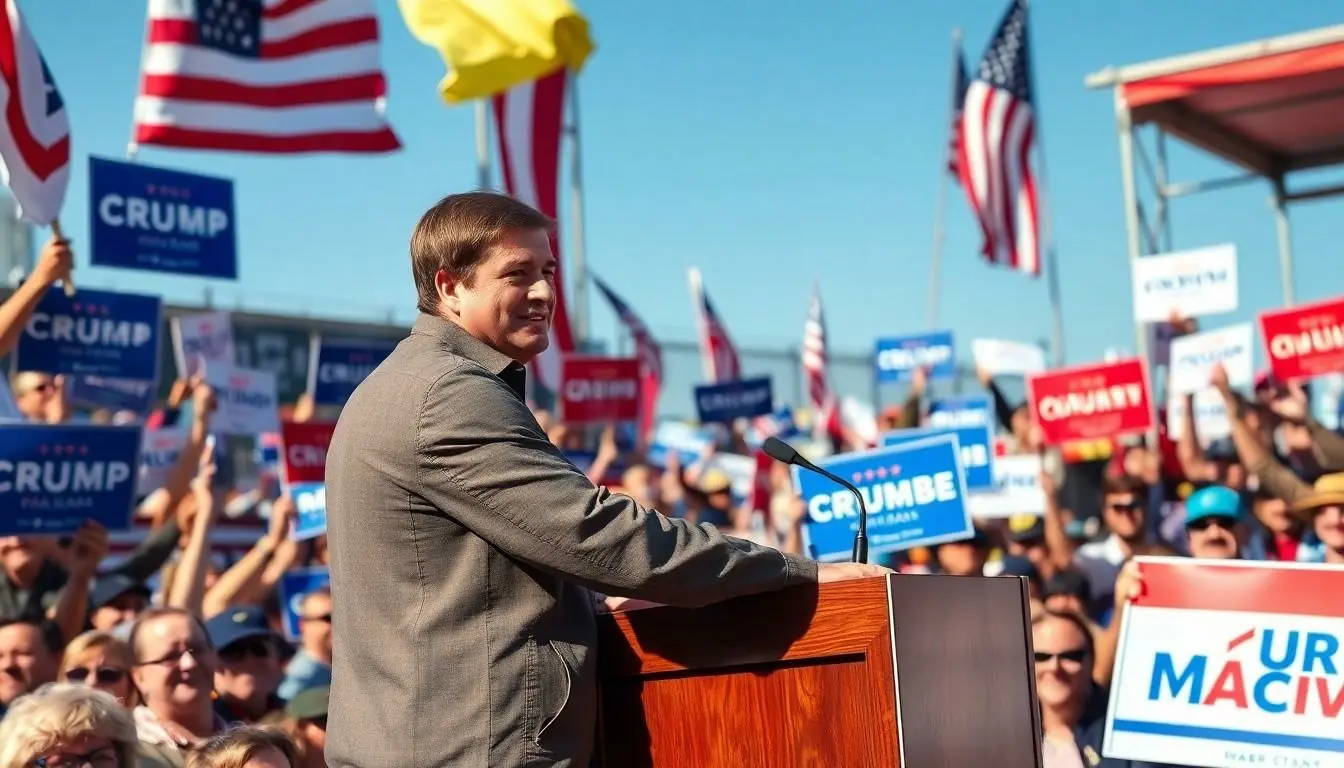Table of Contents
ToggleIn today’s fast-paced political landscape, campaigns are less about grand speeches and more about mastering the art of influence. Candidates are no longer just shaking hands and kissing babies; they’re harnessing social media, data analytics, and even memes to capture the hearts and minds of voters. It’s a whole new ballgame, and if they want to win, they’ve got to play by the modern rules.
So what’s the secret sauce behind successful political campaigns today? It’s a blend of savvy marketing strategies, engaging storytelling, and a touch of humor to keep things relatable. From viral videos to targeted ads, candidates are pulling out all the stops to ensure their message sticks. Buckle up as we dive into the key elements that make or break today’s political campaigns, and discover what it really takes to stand out in a crowded field.
The Role of Technology in Political Campaigns
Technology shapes modern political campaigns, enhancing engagement and outreach. Campaigns rely heavily on social media platforms and data analytics to connect with voters and inform strategy.
Social Media Strategies
Candidates leverage social media to build communities and share messages. Platforms such as Facebook, Twitter, and Instagram provide channels for direct interaction with voters. Campaigns use engaging content, including videos and memes, to capture attention. Sophisticated targeting determines which demographics receive specific messages, ensuring effective outreach. Real-time feedback from followers helps adjust strategies quickly, maximizing impact.
Data Analytics and Targeting
Data analytics plays a critical role in refining campaign strategies. Campaign teams analyze demographic data, voting history, and behavioral patterns to identify key voter segments. Advanced tools segment audiences, allowing for personalized communication that resonates with specific groups. Metrics collected from online interactions guide decisions, optimizing resource allocation. Campaigns can track engagement levels, providing insights into content effectiveness and voter sentiment.
Traditional Campaigning Methods

Traditional campaigning methods remain vital for political success. These strategies enable candidates to connect personally with voters and build grassroots support.
Door-to-Door Outreach
Door-to-door outreach facilitates direct interaction with constituents. Campaign volunteers engage voters by discussing issues that matter most to their communities. This face-to-face approach fosters trust and encourages open dialogue. According to recent studies, voters appreciate personal communication, which boosts candidate favorability. Campaigns that prioritize door-to-door efforts often see higher voter turnout. Thus, candidates leverage this method to ensure their messages resonate on a personal level.
Community Engagement
Community engagement builds a strong local presence. Events such as town halls, rallies, and forums offer opportunities for candidates to share their vision and hear from constituents. By inviting community leaders to join discussions, candidates expand their reach and credibility. Recent polls indicate that voters feel more connected to candidates actively participating in their communities. When candidates listen to concerns and respond with actionable plans, they strengthen their support base. Therefore, successful campaigns incorporate community engagement to cultivate relationships and enhance voter loyalty.
The Importance of Messaging
Messaging plays a crucial role in the success of today’s political campaigns. It involves communicating ideas in ways that resonate with voters, ensuring that candidates effectively express their vision and values.
Crafting Effective Narratives
Engaging narratives capture voters’ interest and create emotional connections. Storytelling allows candidates to present their platforms in relatable terms. Campaigns often use personal stories to make issues tangible, helping constituents see the real-world impact. A well-crafted narrative can differentiate candidates from opponents. It can humanize their campaigns and foster a sense of community among supporters. Incorporating relatable experiences strengthens the message’s authenticity. Voters gravitate toward candidates who share personal journeys and demonstrate empathy.
Adapting Messages for Different Audiences
Understanding diverse voter segments enhances campaign effectiveness. Tailored messaging ensures that communications resonate with various demographic groups. Campaigns often analyze data to identify key characteristics and preferences. Adjusting language and symbols helps align messages with audience values and concerns. Candidates gain credibility when they address specific issues relevant to constituents. Engaging with different cultural contexts can broaden a candidate’s appeal. Focusing on local issues underscores a candidate’s commitment to community needs, reinforcing the message’s relevance.
Fundraising Techniques
Fundraising techniques play a crucial role in the success of political campaigns. Candidates leverage various methods to secure necessary financial support.
Online Fundraising Platforms
Crowdfunding websites have transformed how campaigns raise money. Platforms like ActBlue and GoFundMe allow candidates to reach a broader audience and gather small donations easily. Social media integrations simplify sharing campaign messages, increasing visibility and engagement. Analytics from these platforms provide insights on donor behavior, helping campaigns optimize strategies. Engaging content such as videos and infographics often resonates well with potential donors. These moments encourage personalized outreach, cultivating stronger connections between candidates and constituents.
Events and Donor Relations
In-person events establish vital connections between candidates and supporters. Rallies, fundraisers, and town halls create opportunities for direct interaction. Donor appreciation events cultivate lasting relationships with high-value contributors. Candidates often share personal stories to connect emotionally with attendees, reinforcing their message and mission. Follow-up communications enhance donor relations, demonstrating gratitude and transparency regarding fund usage. Building this rapport ensures ongoing support throughout the campaign and fosters a loyal base of contributors.
Today’s political campaigns thrive on a blend of innovative strategies and time-tested methods. By embracing technology and social media candidates can connect with voters on a personal level while utilizing data analytics to refine their approaches. The balance between engaging narratives and traditional outreach fosters trust and loyalty among constituents.
Effective messaging remains crucial in resonating with diverse voter segments. Candidates who master the art of storytelling and community engagement not only enhance their credibility but also cultivate lasting relationships. As the political landscape continues to evolve, those who adapt and innovate will stand out in the competitive arena, ensuring their message reaches the hearts and minds of voters.


